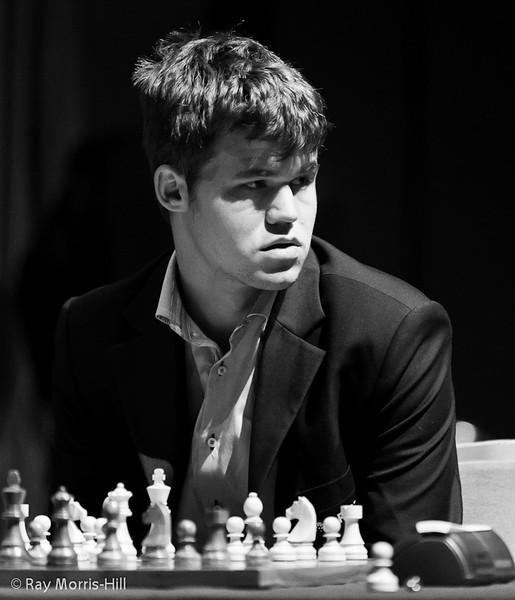
The Best Moves Never Played: Intuition 2
Today we continue with the topic of Intuition and will look at few moments from the Adams - Carlsen game at the recent London Chess Classic. The game did not go well for Carlsen, as Adams had the initiative throughout the opening, middlegame and most of the endgame. However, after a few imprecise moves and a time-trouble blunder, Adams ended up in a worse endgame and eventually lost. We will concentrate on moments where Carlsen's comments suggest intuition, where the language he chooses to describe his decisions involve feeling or have some psychological subtext. I hope you learn as much as I did from his games and from his succinct but excellent comments.
Let us stop at the first moment of interest from the game.

Ne6 is a threat and black can defend it with either Qe8 or Qd7. We don't want to play Qe7 because it might get under Nc6 tempo. Here are Carlsen's justifications for choosing the right continuation:
"I wasn't so sure whether I should go to d7 or e8 but I felt in some lines it would be useful to have some attacking possibilities on the kingside."
The move is not supported by any specific lines and it can be considered an intuitive move. It transpires that there is another advantage to the Qe8 move: the queen can be traded from a8. Later in the game Carlsen managed to trade queens but it was only due to white's imprecise play. Playing Qa8 on move 22, Carlsen could have achieved it at once.
Few moves later black is down a pawn and Carlsen assesses the position correctly:

"Here again he should definitely play 29. Nc6." "This looks like I am going to survive this" "After Nf3 it is still marginally better for white." According to Houdini the difference in advantage is about 0.32, being about plus 0.5 after Nc6 and only plus 0.18 after Nf3. Carlsen's evaluation is very precise, almost computer-like.
The next moment is of interest because of Carlsen's quick mental transition and adaptation. While defending most of the game and being worse, he is ready to play for a win whenever a chance is presented to him.

"At least now if I get to exchange queens, one could make the case that black is the one who has the moral advantage anyway... [then, in a quiet voice] although it is a draw".
This was also a psychological moment as Carlsen talks about this "moral advantage" that black has. Certainly, it was quite unpleasant for Adams to lose significant advantage he had before and to realize that this position is equal. To add to this, Adams was already in time-trouble and this fact did not escape Carlsen as he managed to put as much problems as possible before the move 40.
Here, we can see Adams' fatal mistake on move 40 and Carlsen's comment:
"But another way I thought it was better to go Nd4 and so lets say Qe4... but again this was the 40th move and Mickey had very little time in that scenario it is little bit unpleasant to face a move like this [Qb1]"
Qb1 is the strongest move in the position, but Qg6 is a very good alternative, which after g4 will lead to similar position after Qb1. The major drawback of Qg6 is that white's only reply is automatic: g4, it will be impossible for Adams to go wrong after Qg6, however after Qb1 played right away he faced a major problem with having very little time to solve it.
There are two more moments that are very interesting. The first one is after the commentator asks Magnus how to evaluate the position after c:d instead of capturing the white d6 pawn with the queen:

"Essentially one can say that it is an equal amount of pawns since both sides have one passed pawn; it is a simplification but it is positionally partially true, I think". This is very interesting assessment and no engine could substitute this intuitive approach to the position where the major factor is the number of passed pawns for each side. Although black has two passed pawns, they cannot move together at the same time and black will choose one to stay back and another to push forward.
And the last moment comes in the position where it looks white is much worse - but queen endgames can be tricky and there are certain positions that the strongest side cannot win, even when up two pawns.
"I thought he should try b4 to avoid c5 and gaining even more space". One of the reasons to keep the black pawn away from the c5-square is that after c5 black has absolutely splendid square d4 for his queen. Since white cannot trade queens due to lost endgame white would need to settle for a passive queen position.
Next week we will continue exploring the topic of Initiative and how the great chess minds used it to evaluate positions or to make their decisions.






